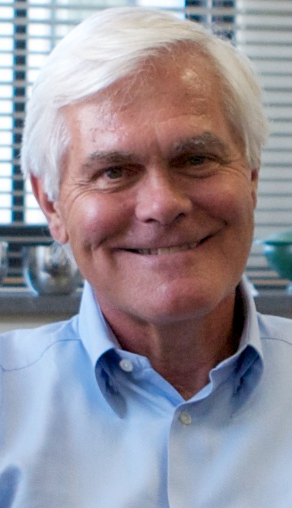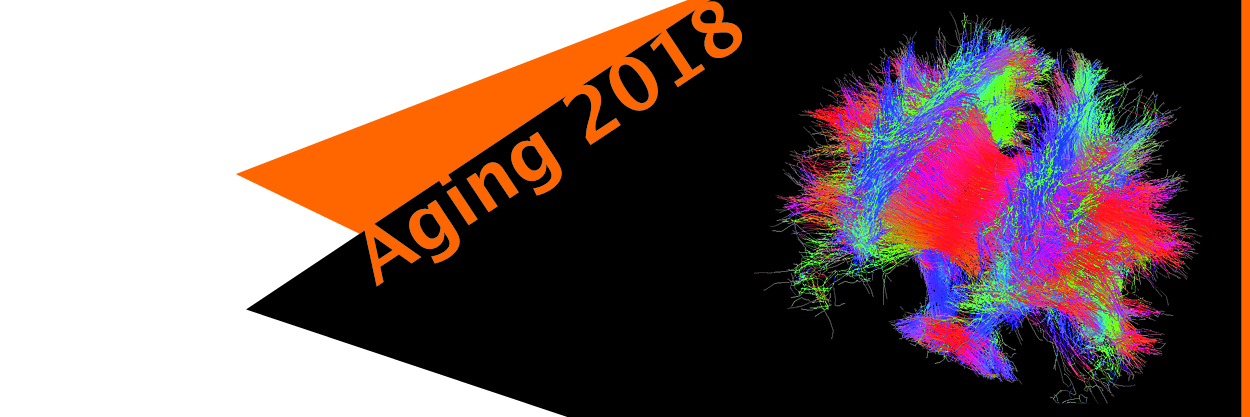Speakers
Download the abstract book (pdf)
 Nora Abrous
Nora Abrous
Adult hippocampal NEUROGENESIS and spatial memory during aging
INSERM U1215, Neurocentre Magendie, F-33000 Bordeaux, FranceUniversité de Bordeaux, F-33000 Bordeaux, FranceAging is associated with cognitive dysfunction, which has been correlated to an alteration of hippocampal functioning Indeed, the hippocampal formation (HF) plays a crucial role in controlling a wide array of cognitive functions, and is the brain region most vulnerable to ageing processes. The mammalian HF, in particular the dentate gyrus (DG), is an important site for the production of new neurons during adulthood. The aim of our work is to determine the relationship between the production and activity of these newborn neurons throughout life and the appearance of age-related cognitive deficits. We have found that cognitively-impaired senescent rats display lower rate of neurogenesis than cognitively-unimpaired old rats. These inter-individual differences are link to the activity of the pituitary hypothalamo-pituitary-adrenal (HPA) axis. Indeed, we have shown that 1) the magnitude of HPA axis activity in old animals is correlated with their rate of neurogenesis and memory ability, 2) natural individual differences in the activity of the HPA axis in young adult animals predict the extent of age-induced alterations; 3) increasing the activity of the HPA axis by prenatal stress impairs adult neurogenesis and memory throughout life, 4) lowering corticosterone secretion from midlife onward reduces the decline in neurogenesis observed in old rats and prevents age-related memory disorders. 5) More recently, by tagging neurons born in adult, middle-age and old rats, we found that these neuronal cohorts are recruited by learning only in old rats with good memory abilities. These results suggest thata preservation of the synaptic inputs onto adult born neurons may be responsible for preserved memory abilities of aged rats. Altogether these data strengthen the idea that alterations in adult hippocampal neurogenesis play a pivotal role in the development of pathological aging and reinforce the hypothesis of an early neurodevelopmental origin for psychopathological vulnerabilities in aging.
.....
 Hélène Amieva
Hélène Amieva
Concepts of reserve and frailty in cognitive aging: results from epidemiology
Bordeaux Population Health Center INSERM U1219, Team Psychoepidemiology of aging and chronic diseases, University of BordeauxA deeper knowledge of the pre-dementia phase of Alzheimer's disease is important to allow earlier and better management of this ominous disease. This prodromal period has been investigated in the French epidemiologic PAQUID cohort by analysing change in cognitive performances of a large sample of older adults over a 20-year period. Neuropsychological measures including global cognitive functioning, visuo-spatial memory, verbal fluency and cognitive speed were assessed in 3777 older adults among whom about 400 developed Alzheimer’s disease along the follow up. The results show how early cognitive symptoms may emerge before the full clinical diagnosis of Alzheimer dementia particularly in higher-educated individuals, for whom decline occurred up to 16 years before dementia. Lower educated participants presented a shorter and different pattern of cognitive trajectory. Hence, the results illustrate the protective role of education in the clinical trajectory preceding dementia.
Another predicting strategy consists in focusing not exclusively on a particular syndrome but on negative brain outcomes more generally. Syndromes like dementia, stroke, depression and disability have in common high frequency in late life. Even though each of these disorders relies on specific pathogenic processes, a common clinical manifestation of these disorders is psychomotor slowing. Psychomotor slowing is a fundamental and multi-composite marker of brain functioning. It reflects overall efficiency of cognitive operations, which in turn plays a critical role in maintaining higher-order functions. A second study showed that low psychomotor speed is associated with an increased risk of developing negative neurocognitive outcomes such as not only Alzheimer’s disease, but also stroke, depression, disability and marginally Parkinson’s disease in a 10-year delay. Therefore, one could conclude that cognitive slowing reflects a state of brain frailty. An alternative view would postulate that low cognitive speed may not necessarily be secondary to subtle brain impairment, but rather could be a marker of cognitive reserve since prior studies have suggested that differences in psychomotor speed are detectable in childhood and persist through adulthood. Future research having access to assessments all along the life span should determine if early life psychomotor speed is a significant predictor of later life negative cognitive outcomes and should be viewed as a factor of resilience to the adverse effects of brain aging or a marker of brain frailty.
.....
 Carol Barnes
Carol Barnes
Normal lifespan changes in brain circuits critical for memory
Regents' Professor, Psychology and NeurologyEvelyn F. McKnight Chair for Learning and Memory in AgingDirector, Evelyn F. McKnight Brain InstituteDirector, Division of Neural Systems, Memory and AgingAging is associated with specific impairments of learning and memory, some of which are similar to those caused by damage to temporal or frontal lobe structures. For example, healthy older humans, monkeys and rats all show poorer spatial, recognition and working memory, than do their younger counterparts. Rats and monkeys do not develop age-related pathology such as Alzheimer’s or Parkinson’s diseases, which makes them good models for assessing functional alterations associated with normal aging in humans. While many cellular properties of medial temporal lobe cells appear to be intact in aging animals, age-related impairments in synaptic function, plasticity and gene expression have been observed. Because information is represented by activity patterns across large populations of neurons, an understanding of the neural basis of cognitive changes in aging requires the examination of the dynamics of behaviorally-driven neural networks. Ensemble recording experiments are described that suggest fundamental changes in the storage and retrieval of information, as well as in high level perceptual processing in aging hippocampus and perirhinal cortical circuits. In addition, frontal lobe correlates of age-related changes working memory are discussed. The data presented are congruent with recent suggestions that rather than uniform deterioration, the aging brain shows region and cell-specific changes consistent with adaptation and compensation in these altered memory circuits.
.....
 Audrey Branch
Audrey Branch
Individual Differences in Aging Outcomes: Contributions of Neurocognitive Aging to Risk and Resilience
Johns Hopkins University, Department of Psychological and Brain Sciences.Johns Hopkins University Kavli Neuroscience Discovery Center.Like aging humans, aged outbred rats exhibit individual differences in cognitive outcomes. We have found substantial evidence for a distinct signature of hyperactivity in both medial temporal lobe and cortical circuits in animals displaying age-dependent cognitive decline. A subset of these aged animals behaves on par with young subjects in hippocampal memory tasks, providing a window into mechanisms supporting cognitive resilience. In our recent pharmacological and behavioral work, we show that aged unimpaired animals retain young-like expression of behaviorally induced activity and plasticity related genes. However, they do so alongside a unique upregulation of inhibitory markers. This finding is consistent with earlier observations showing greater recruitment of inhibitory control in aged intact, relative to impaired rats, and may represent an adaptive adjustment in homeostatic control of excitatory/inhibitory balance in the face of aging.
.....
 Gwenaelle Catheline
Gwenaelle Catheline
Cognitive decline during aging : a multimodal neuroimaging contribution
MC Ecole Pratique des Hautes Etudes, UMR 5287 CNRS, Univ Bordeaux, EPHEAging is associated to both structural and functional cerebral changes. Although these grey and white matter alterations have been described since the 19th century by post-mortem studies, the development of neuroimaging technique over the past 20 years has enabled in vivo descriptions on elderly subjects. Moreover, the safety of Magnetic Resonance Imaging (MRI) has allowed longitudinal studies with repeated MRI over large population cohorts. These longitudinal studies, providing a promising framework for the study of the asymptomatic phases of age-related neurodegenerative, is a specificity of the Bordeaux epidemiological center for a long time. Based on two cohorts of this kind (3City-Bordeaux and AMImage) we have revealed that age-related decline in episodic memory is associated with an early atrophy of the hippocampus followed by the atrophy of the posterior cingulate cortex. From a functional point of view, age-related episodic memory decline is associated with a loss a functional connectivity of the posterior cingulate cortex. In a second set of studies, we were interested to the sleep/wake cycle as a factor of cognitive vulnerability in the elderly. Sleep/wake cycle data are collected in the environment of the subjects through wrist actimeters. We have observed that not only sleep but also 24-h cycle disturbances were associated with altered structural connectivity revealed through DTI parameters. This alteration of structural backbone networks related to activity/rest cycle disturbances in aging might constitute a cerebral frailty factor for the development of cognitive impairment.
.....
 Gaëlle Chételat
Gaëlle Chételat
From reserve to preventive interventions: example of the European project MEDITAGEING
Université Normandie, Inserm,Université de Caen-Normandie, Inserm UMR-S U1237, GIP Cyceron, Caen, FranceCognitive decline, dementia (e.g. Alzheimer’s disease, AD), sleep disturbances and depression – all related to psychological distress and anxiety – are significant drivers of reduced quality of life in older adults. A third of AD cases may be attributable to potentially modifiable risk factors, the main ones being cardio-vascular risk factors, depression and physical and cognitive inactivity. Current large scale long-term preventive non-pharmacological trials target most of these risk factors with multidomain approaches including physical activity, cognitive activity, diet and prevention cardio-vascular risks but do not directly target depression and psychoaffective factors at large. Mental training for the reduction of stress, the regulation of attention and the cultivation of positive emotions through meditation practice appears as a promising way to take care of the emotional dimension of ageing. Thus, meditation practice has the potential to down-regulate several of the adverse factors cited above and, thereby, to have a positive impact on mental health and wellbeing – notably in the ageing population. This talk will illustrate the interest for meditation in ageing populations by showing preliminary evidences from previous studies. We will also present the design of a European project MEDITAGEING aiming at assessing the effects of meditation on mental health and well-being in the ageing population. Ten partners from 6 countries (France, Spain, Germany, UK, Switzerland and Belgium) are involved in this collaborative project including two clinical trials sponsored by Inserm. Results are expected to foster the development of preventive strategies in ageing reducing the negative impact of mental conditions and disorders.
.....
 Neal J Cohen
Neal J Cohen
Relational Memory Theory
Department of Psychology, Beckman Institute, Carle Illinois College of Medicine, and Interdisciplinary Health Sciences Institute, University of Illinois
Relational memory theory holds that representations of experience mediated by the hippocampus, in interaction with neocortical networks, are fundamentally relational. Hippocampal representations capture the spatial, temporal, and other contextual relations among the constituent elements of experience, that is, among the people, objects, places, actions, etc. that populate events as they unfold in their particular temporal-spatial context, as well as the relations among successive events as they unfold over the course of an extended episode. The hippocampus organizes experiences into a flexible, multidimensional memory space that supports a range of memory performances and memory-guided choice behaviors in navigating space, time, and life in all its rich complexity. This talk shows how relational memory theory can reconcile data across species, tasks, methods, & disciplines, and pays tribute to the profound contributions of Howard Eichenbaum to our understanding of memory and the brain.
.....
 John Disterhoft
John Disterhoft
Aging and Learning Alters Neuron Function in Hippocampus and Lateral Entorhinal Cortex
Department of Physiology, Northwestern University Feinberg School of Medicine, Chicago, IL 60611
Increases in intrinsic excitability of hippocampal neurons via a reduction in calcium-activated potassium currents (postburst afterhyperpolarization, AHP) have been demonstrated to be a cellular hallmark of successful associative learning (e.g., trace eyeblink conditioning, fear conditioning and spatial water maze learning) in young adult subjects. Notably, these currents are enlarged at baseline in neurons from aging animals, contributing to impaired learning. However, those aging animals that can learn (aging unimpaired or AU) demonstrate CA1 pyramidal neurons with increased excitability as compared to learning-impaired aging (AI) animals. Moreover, pharmacological (e.g., cholinergic agonists) or genetic (e.g., CREB overexpression) manipulations that enhance neuronal excitability of CA1 pyramidal neurons to a ‘young-like’ state have been proven to rescue aging-related learning deficits. Using calcium imaging with two-photon laser scanning microscopy, we demonstrated that calcium influx following a train of action potentials is increased in aging neurons, contributing to the enhanced calcium-activated potassium currents observed in aging animals. Surprisingly, we observed increased calcium transients caused by bath application of cholinergic agonist carbachol that abolished the postburst AHP in CA1 neurons from behaviorally naïve animals. This carbachol-induced increase in calcium transients appears to be abolished (occluded) in CA1 neurons from AU rats after learning, indicating that the cholinergic signaling pathway has been used for successful learning in the AU rats. The lateral entorhinal cortex (LEC) is known to be a vital pathway of information flow into the hippocampus and is among the first areas of the brain to exhibit AD pathologies prior to the observation of behavioral deficits. As in the hippocampus, neurons from layer III (origin of temporo-ammonic pathway) and layer V (receives hippocampal output from CA1) of the LEC exhibit an aging-related decrease in cellular excitability, and an increase in cellular excitability following acquisition of trace eyeblink conditioning. One of the prominent features of layer III and V LEC pyramidal neurons is their ability to exhibit persistent firing activity, a cholinergic dependent property that is a potential cellular mechanism to bridge multimodal stimuli across time for associative learning, such as the conditioned stimulus and unconditioned stimulus across the temporal gap in trace conditioning. We have recently observed that both layer III and layer V LEC neurons from aged animals are less likely to persistently fire and are less able to maintain the frequency of their firing, potentially stemming from a loss of cholinergic tone, and thereby contributing to age-associated learning and memory impairments.
.........
 Anders Fjell
Anders Fjell
Role of sleep for memory consolidation in aging
Center for Lifespan Changes in Brain and Cognition, Department of Psychology, University of Oslo, Oslo, NorwayDepartment of Radiology and Nuclear Medicine, Oslo University Hospital, Oslo, Norway
On a group level, episodic memory function is reduced in higher age. Previous research has shown that age may affect both encoding and retrieval processes. However, also the third major process of memory – consolidation – may be affected by age. Still, consolidation has received much less attention in previous research. There are theoretical and empirical reasons to expect that also changes in consolidation are important in aging: brain structures critical for memory consolidation are vulnerable to aging, the connections between these structures change with age, and sleep quality – critical for memory consolidation – is generally reduced. Still, we have only superficial understanding of the contributions of consolidation to episodic memory decline in aging. A major reason for this lack of focus may be methodological – in contrast to encoding and retrieval, consolidation is not associated with a conscious experience or an explicit cognitive attribute. Thus, one cannot easily distinguish between consolidation and retrieval processes, as an inherent problem with the behavioral approaches is that reminders and cues can either create new engrams or fortify connections themselves. This makes consolidation difficult to measure and the neural correlates hard to pin-point. In this talk, I will present tentative behavioral evidence suggesting that episodic memory consolidation should also be a target for memory aging research, and how future research could try to address the inherent methodological challenges described above. Sleep is critical for memory consolidation, and changes in sleep patterns are often observed with age. Thus, the role of sleep in memory consolidation in aging will be addressed.
.....
 Aline Marighetto
Aline Marighetto
A model of age-related decline of declarative memory based on the relational theory: identification of temporal binding as a key process
INSERM U1215, Neurocentre Magendie, F-33000 Bordeaux, FranceUniversité de Bordeaux, F-33000 Bordeaux, FranceOne major component of cognitive aging is the degradation of declarative memory (DM), the conscious and verbally expressible memory of facts and episodes that depends on the hippocampus. To identify underlying mechanisms of DM degradation occurring in aging, we have developed a radial-maze model of DM impairment in aged mice based on the relational theory, according to which non-verbal characteristic of DM is its flexible expression and this flexibility relies on a relational representation of past events. Using our radial-maze task in mice and its virtual analog in humans, we recently demonstrated that the age-related loss of flexible memory expression, i.e. of DM, was due to a degradation of temporal binding, the capability to associate temporally discontiguous events into a relational memory representation, and shown to rely on CA1 activity across brief temporal intervals between events.
.....
 Chantal Mathis
Chantal Mathis
Separating the similar in mouse models of aging and Alzheimer's disease
LNCA, UMR 7364 CNRS, Université de Strasbourg, Neuropôle de Strasbourg, 12 rue Goethe, Strasbourg, France
Performance in separating overlapping memories is thought to rely on a pattern separation computational process occurring within the medial temporal lobe. Older adults show reduced performance in pattern separation demanding recognition tasks using similar objects or object locations. Alzheimer patients show profound deficits at a very early stage when neurodegeneration spreads through the medial temporal lobe. This is consistent with several studies showing that pattern separation performance depends on the integrity of the dentate gyrus (DG)-CA3 region and its inputs from cortical regions of the temporal lobe. Animal studies further suggest a role for adult-born DG neurons. In a pattern separation task based on subtle changes in object location, we showed a progressive decrease in performance from mild to severe between the age of 7 to 21 months in C57BL/6J mice. Aged mice were also impaired in a pattern separation task based on subtle changes in object appearance. In the APP SWE model of Alzheimer’s disease, object location based performance drops very rapidly between 3 and 4 months of age. Interestingly, brain levels of amyloid peptide are known to increase around this age in APP SWE mice. We hypothesized that pattern separation deficits in APP SWE mice and in aged mice had different origins. Accordingly, chronic treatment with m266 (antibody against amyloid peptide, gift from Boehringer Ingelheim, Germany) completely rescued pattern separation performance in APP SWE mice, whereas a deep deficit remained in aged C57BL/6J mice. Preliminary results suggest that performance improvement in APP SWE mice was not mediated through a beneficial effect on quantitative aspects of DG neurogenesis. Our ongoing studies focus on functional activation of neuronal populations thought to participate in some pattern separation-like processing. Grant from Association France Alzheimer and Groupe Intériale.
.....
 Lars Nyberg
Lars Nyberg
Memory aging and brain maintenance
MPI Berlin, Germany, Umeå University, Sweden
The aging brain undergoes many changes that can impact memory and cognition, but some older adults display brain maintenance, or lack of senescent brain changes and age-related brain pathology. General brain maintenance remains a possibility, but at present selective maintenance of some brain systems along with age-related decline in others appears more likely. This presentation is focused on structural and functional maintenance of the hippocampus complex, as hippocampal maintenance is a key determinant of well-preserved episodic-memory functioning in old age. Several potential neural and non-neural mechanisms promoting hippocampal maintenance will be considered, including neuronal survival and neurogenesis, intact neuronal morphology, and vascular integrity. Evidence will be reviewed that suggest that correlated genetic and environmental factors influence the operation of these maintenance mechanisms, partly through lifestyle choices. Finally, some ideas for future work on brain maintenance will be discussed, including contributions of specific connections, transmitter systems, and subregions to hippocampal maintenance.
.....
 Peter Rapp
Peter Rapp
Neurocognitive Aging: Synapses to Neural Networks
Laboratory of Behavioral Neuroscience, Neurocognitive Aging Section, National Institute on Aging, Baltimore, MD, USADeficits in memory and other domains of cognitive function are among the most troubling signs of aging. Alongside the devastating impairments of Alzheimer’s disease and related neurodegenerative disorders, a much larger proportion of older individuals experience milder decline in cognitive health that nonetheless compromises the quality of life and capacity for independent living. An earlier view was that neuron death in memory-related brain regions is an inevitable consequence of growing older and the proximal cause of age-related cognitive impairment. Marked and distributed neuronal degeneration, however, is now understood to be a signature of pathological aging, and considerable evidence suggests instead that the brain changes associated with normal aging are regionally selective, involving relatively subtle alterations in connectivity and a blunted capacity for dynamic neural network plasticity. The specific pattern of change varies substantially across individuals, and growing interest has centered on the idea that optimally healthy cognitive outcomes arise from a lifecourse neuroadaptive trajectory rather than compensatory mechanisms or a slower rate of aging. This perspective has encouraged a search for strategies to promote neuroadaptive aging, including the possibility that noninvasive brain stimulation and other novel approaches might shift the fundamental course of growing older away from neurodegenerative disease. Basic research in experimental animal models has provided a valuable window on these issues.
.....
 Laure Rondi-Reig
Laure Rondi-Reig
How Cerebellum can impact Hippocampal Activity: Space, Time and Aging
Neuroscience Paris Seine, Cerebellum, Navigation and Memory Team, CNRS UMR 8246; INSERM, UMR-S 1130; Sorbonne Université, Université Pierre and Marie Curie, Paris, France.
Over the last decades, an increasing number of researches have reported the role of the hippocampus beyond space representation, in particular highlighting its role in the representation of time. Complex behavioral paradigm offers an ideal framework to evaluate brain activity in time and space. In particular, spatio-temporal navigation offers suitable paradigms to probe for episodic memory in animal models and humans. We previously proposed that the ability to remember an ordered sequence of choices during spatial navigation could be one of the episodic memory properties shared by human and rodent models. We thus developed the Starmaze paradigm that allow to test a new and objective experimental memory of a personal past experience. The use of Virtual Reality increases the active engagement of the subject during learning and avoids verbal report. We previously demonstrated that the ability to learn the correct sequence of choices is associated with the co-activation of both the hippocampus and the cerebellum and is particularly sensitive to age-related decline in both rodents and humans. Using such sequence strategy associated with neuropsychological tests, we were also able to differentially diagnose Alzheimer patients from fronto-temporal dementia ones and normal aging controls with a 100% sensibility and specificity. These different findings clearly point up navigation paradigms as powerful tools to diagnose memory deficits. However, major challenges remained and my group is currently tackling two points. First, how the different functions involved in navigation (i.e. memory, executive function and sensory-motor processing) are captured by navigation scores. Second, how hippocampal activity can be modulated by other structures of the navigation network. Here, we particularly focus on how the cerebellum may impact the hippocampal code.
.....
 Embla Steiner
Embla Steiner
Adult Neurogenesis in Human
Department of Cell and Molecular Biology, Karolinska Institute, SE-171 77 Stockholm, SwedenIt was thought for a long time that the nervous system was incapable of regeneration. Although most neurons are generated before birth, it is now established that new neurons are generated continuously throughout life in discrete areas of the brain. In most mammals, adult neurogenesis is limited to two areas of the brain during physiological conditions; the dentate gyrus of the hippocampus and the olfactory bulb, where immature neurons migrated from the subventricular zone are integrated as mature neurons. Adult neurogenesis appears to be altered in models of neurological and psychiatric diseases. Depression is associated with reduced hippocampal neurogenesis and antidepressant drugs stimulate neuronal turnover in rodents. After stroke, reactive neurogenesis in the neurogenic niches, as well as cortex has been demonstrated in rodent. In Alzheimer’s disease and Parkinson’s disease the results are more contradicting.
Most studies on adult neurogenesis are performed in animal models, because studying adult neurogenesis in humans is technically challenging. In the late 90s Eriksson et al. established adult neurogenesis in the human hippocampus, however the dynamics and the extent of adult neurogenesis remained unknown. A retrospective birth dating method, developed in our laboratory, allows us to investigate the turnover of cell populations in human tissues, by measuring the concentration of nuclear-bomb-test-derived 14C in genomic DNA. Recent work from our group has shown that humans are unique among mammals in that there is no detectable neurogenesis in the olfactory bulb but substantial neurogenesis in the striatum. In order to investigate the function and clinical relevance of adult neurogenesis, we have set out to investigate the neuronal turnover dynamics in the pathologies associated with altered neurogenesis.
.....
 Sandrine Thuret
Sandrine Thuret
Neural stem cells as biomarkers of cognitive aging and dementia
King's College London, Institute of Psychiatry, Psychology & Neuroscience, Department of Basic and Clinical Neuroscience, London United Kingdom.Age-related declines in stem cell function in the body and central nervous system of rodents can be reversed by exposure to a youthful systemic milieu. Conversely, the old milieu inhibits stem cell function in young rodents. In this study, allogeneic human serum from old healthy individuals induced an increase in apoptotic cell death of human hippocampal progenitor cells when compared to serum from young subjects. General Linear Models revealed variability in markers of proliferation and differentiation was partly attributable to intake of antihypertensive medication and very mild cognitive decline among older subjects. An endophenotype approach revealed upregulation of established and novel ageing molecular hallmarks in response to old serum following whole-genome expression arrays. interestingly, serum from older subjects induced a wide range of cellular and molecular phenotypes, likely reflecting the cumulative effect of health exposures and inequalities during a lifetime. Data will also be presented on how serum of mild cognitively impaired patients differentially alters human hippocampal progenitor cell fate to predict conversion to Alzheimer’s Disease.
.....
 Thomas Wolbers
Thomas Wolbers
What neural mechanisms can explain navigational decline in old age?
Aging & Cognition Research Group, German Center for Neurodegenerative Diseases (DZNE), Magdeburg, GermanyWhile decades of research into cognitive aging have focused on functions such as memory and attention, spatial navigation has been understudied. This is surprising because key structures of the brain’s navigation circuit are particularly vulnerable to the deleterious consequences of aging. In addition, deficits with spatial orientation are often among the first noticeable symptoms in patients with Alzheimer’s Disease. Given the recent breakthroughs in understanding the cellular components of basic navigational circuits in rodents and primates, we are now in the position to identify changes in the navigation network that occur as a result of normative aging processes and specific neuropathological conditions.
In this talk, I will outline recent studies that have begun to elucidate age-related changes in human navigational processing, using advanced virtual reality paradigms and high-resolution neuroimaging. By targeting specific spatial computations, these experiments have revealed mechanisms of altered positional coding in the hippocampal formation and beyond. Importantly, our findings also offer novel insights into general mechanisms of brain ageing that could affect processes beyond the spatial domain. Finally, I will conclude with a discussion on how navigational indicators could aid early detection of neuropathological conditions and support behavioral interventions to maintain cognitive wellbeing.
.....
 Michael Yassa
Michael Yassa
Episodic Memory in the Aging Brain
Center for the Neurobiology of Learning and Memory, University of California, IrvineMemory is the bridge to our past and future. Without memory, we would be stuck in a constant present, unable to learn from our experiences and unable to plan for the future. Memory loss can have catastrophic impact on life and livelihood. Memory degrades to some extent in everyone as we get older. It is completely ravaged in dementing illnesses such as Alzheimer’s disase, placing a tremendous burden on individuals, families, and global public health. This talk will discuss our approach to understanding the neural mechanisms underlying episodic memory (memory for ‘what’, ‘where’ and ‘when’), and how this approach can inform our understanding of age-related memory loss. I will highlight recent advances in determining the functional division of labor in the medial temporal lobes using a combination of targeted behavioral paradigms for what, where and when memory and high-resolution functional MRI. This fundamental understanding is then applied to examining memory in older adults and assessing susceptibility to Alzheimer’s disease, providing potential avenues for clinical intervention.
